James Buchanan House (Nashville)
Introduction
Text-to-speech Audio
Images
Exterior view of the Buchanan Log House
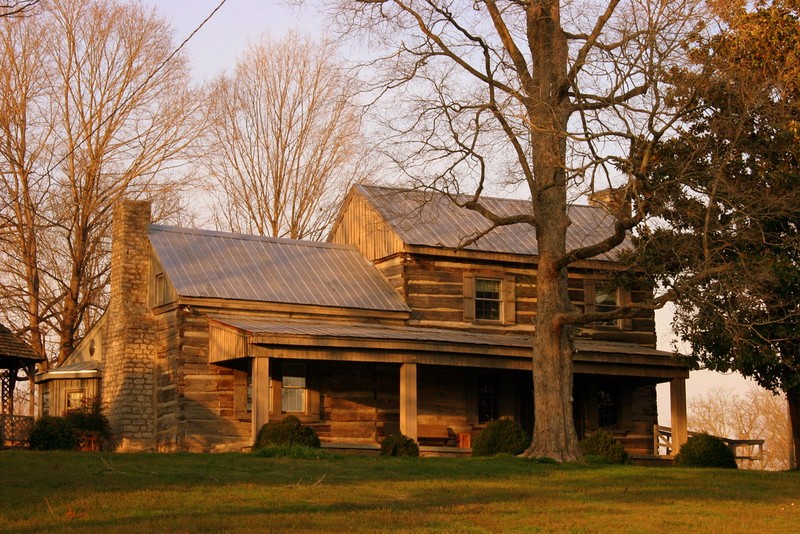
An exterior view of the Buchanan House
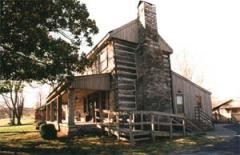
An exterior view of the Buchanan House
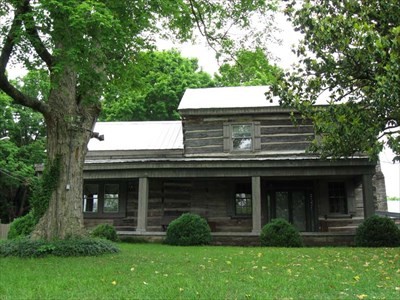
Interior of the Buchanan House
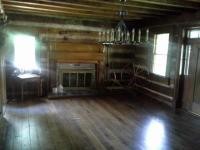
Sign for the Buchanan House
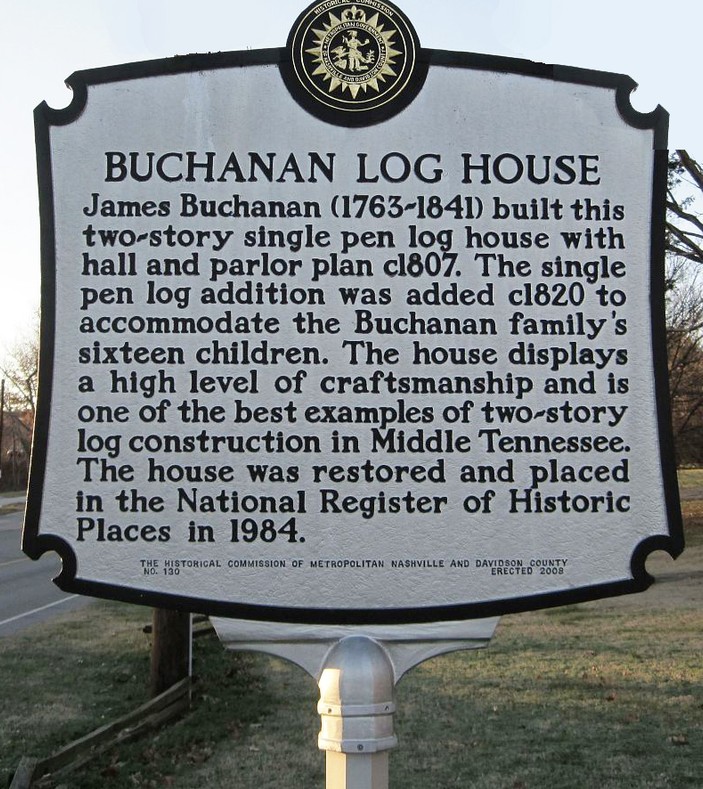
Backstory and Context
Text-to-speech Audio
During the late-eighteenth and early-nineteenth centuries, many people migrated from the eastern seaboard to what was, at the time, the Western Territory of North Carolina. These pioneers formed settlements in what would become the state of Tennessee. By the late-1770s and early-1780s, settlers had formed the Cumberland settlement in what is now Middle Tennessee. One of these settlers was James Buchanan.
Born in Virginia on July 16, 1763, James Buchanan (no relation to the U.S. president of that name) moved to Nashville with his family in 1785 from Augusta County, Virginia. They settled on a 640-acre tract of land called Clover Bottom. With the death of his father in 1806, James inherited half his father's lands. In about 1800, James started construction of his two-story log house. He married Lucinda East around 1810. Their family eventually included 16 children -- 10 daughters and 6 sons -- and thus a one-and-a-half-story log pen was added to the original house. James Buchanan was involved in the War of 1812 as a member of Captain Thomas’s Davidson County Militia Company. Buchanan operated a successful wheat, corn and livestock farm. By 1850, this farm contained 260 acres and was valued at the high price of $5500. Buchanan died on February 14, 1841, and management of the farm passed to Buchanan's widow Lucinda and his son Addison.
With Lucinda's death in 1865, just as the Civil War was ending, the farm was sold to Judge Thomas N. Frazier. Born in East Tennessee in 1810, Thomas Neil Frazier became Criminal Court Judge for Rutherford and Davidson counties. During the Reconstruction Era, he was involved in one of the bitterest local controversies of the period, involving the state ratification of the Fourteenth Amendment to the Constitution, in which Frazier found himself embroiled in a fight between radical and conservative Republicans, resulting in his impeachment in February 1867. However, with the passage of a new state Constitution, Frazier was returned to office in 1870. Frazier's son, James Beriah Frazier, born in 1856, spent his teenage years in the log house and eventually followed his father into the legal profession. In 1902, he was elected governor with the largest majority of any candidate since the Civil War. Although he won re-election for governor, he did not serve his term, as the sitting U.S. Senator, William Bate, had died, and James Frazier was elected to take his place, serving until 1911. The house remained in the Frazier family until the death of James' wife Margaret in 1910, and shortly thereafter the property was divided and sold to various individuals. The history of the Buchanan and Frazier families are representative of the enormous social, cultural and political changes in Middle Tennessee from the time of frontier settlement through the Civil War and Reconstruction.
There have been numerous architectural changes to the house throughout the years, but the historic residence retains a great deal of its original character and charm. Though settlers and their families often built small log buildings themselves, the size, complexity, and workmanship of the Buchanan House indicate the presence of a professional builder and his crew. The original house was constructed on a continuous foundation of lightly-worked limestone blocks, and utilized hewn hardwood logs from the surrounding forest for the walls, including the interior dividing wall. Half-dovetail notched at the corners and built to traditional dimensions, the building had multiple windows on both floors. On each exterior end of the house was a tall, well-constructed, double-shouldered fireplace composed of roughly-hewn limestone blocks. The roof sheathing consists of un-edged, sash-sawn yellow poplar planks nailed to the rafters. Originally, the roof was covered with wooden boards or shingles, but in the mid-twentieth century, one of the owners removed the earlier roofing material and installed galvanized sheet metal panels on the entire building. As in many early buildings, there were upstairs hearths as well. The surviving east fireplace on the second floor of the Buchanan House has inscribed geometric markings on the face of the keystone in the arched lintel above the opening. These markings were possibly related to Masonic symbolism.
In 1973, Barry and Virginia Greer bought the Buchanan House and spent eight years restoring it. In 1984, after the Greers completed the restoration work, they placed the Buchanan Log House on the National Register of Historic Places for its architectural and historical significance. In 1989, the Metropolitan Nashville Airport Authority (MNAA) made an agreement to purchase the Buchanan House as part of its plan to expand Nashville’s commercial airport, but several years later, the MNAA turned the historic house and a surrounding 1.4-acre lot over to the Association for the Preservation of Tennessee Antiquities (APTA) to administer for the benefit of all the state's citizens.
The house is open for guided tours during the summer months for a small fee. It is also available for rental for weddings, family reunions and business meetings.
Sources
Rogers, Stephen T. "National Register of Historic Places Inventory—Nomination Form." National Park Service, Department of the Interior. Publication Date: October, 1983. Access Date: 12/22/19. https://npgallery.nps.gov/GetAsset?assetID=f136b821-7e96-4f11-8e5b-e649ecda78f7.
"History." Buchanan Log House, Donelson Living History. Access Date: 12/22/19. https://www.buchananloghouse.com/history.
"Buchanan Family Timeline." Buchanan Log House, Donelson Living History. Access Date: 12/22/19. https://www.buchananloghouse.com/family.
Gavin, Michael and O'Bryan, Katherine. "Contextual and Architectural History, Condition Assessment, and Interpretive Plan for the Buchanan Log House." Tennessee Civil War National Heritage Area. Publication Date: August 2011. Access Date: 12/22/19. http://www.sitemason.com/files/cVqpA4/Buchanan%20Log%20House.pdf.
"Buchanan Log House and Addison Museum." Nashville Life. Access Date: 12/22/19. https://www.nashvillelife.com/Buchanan-Log-House-and-Addison-Museum/Nashville-TN.
